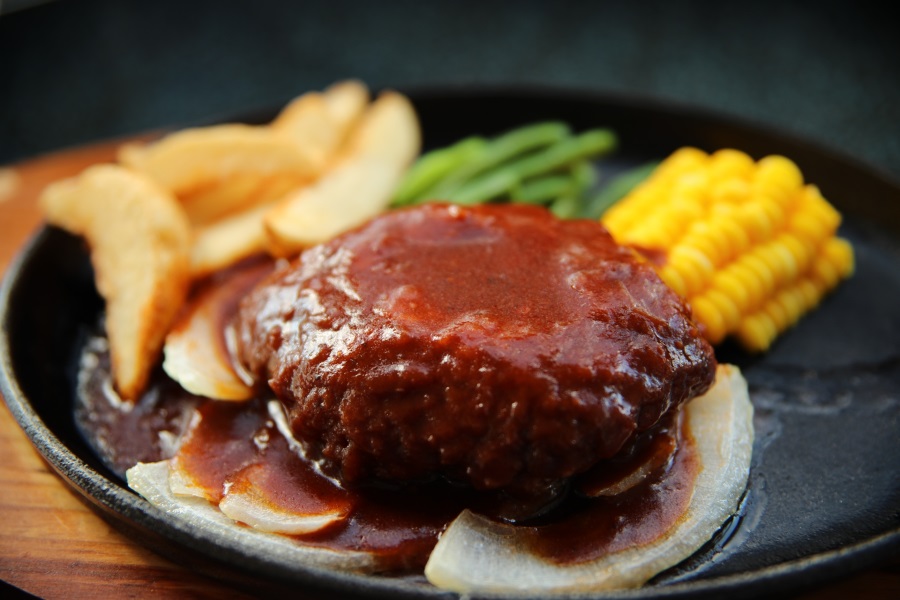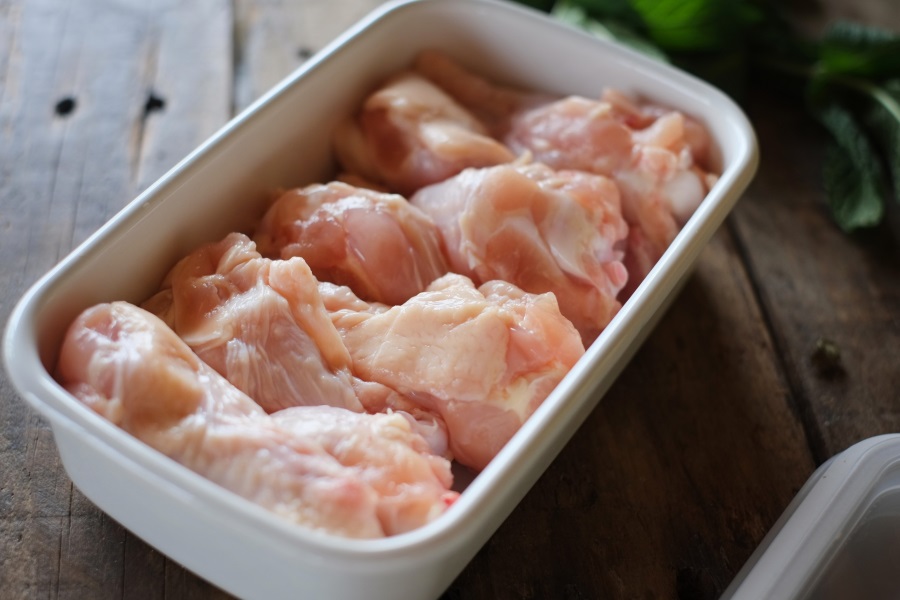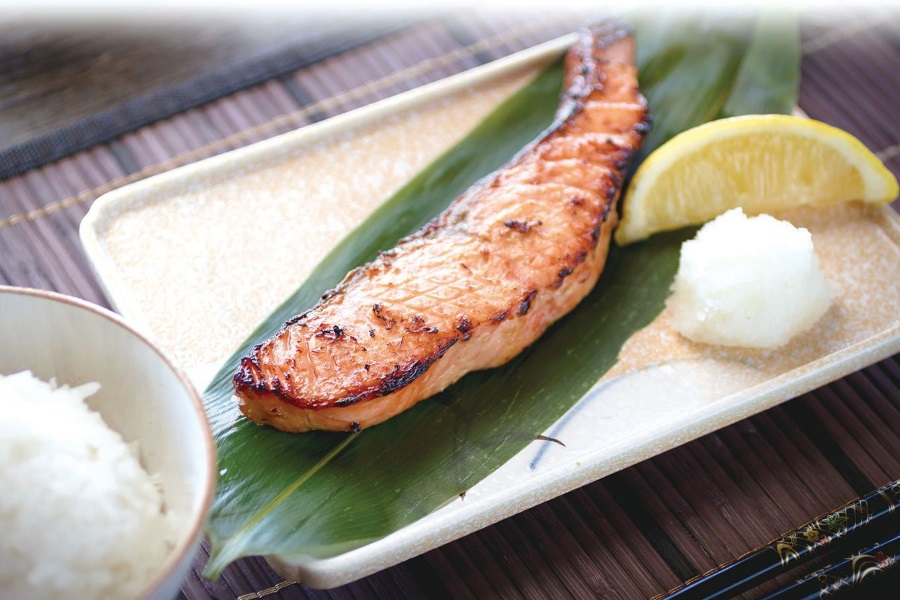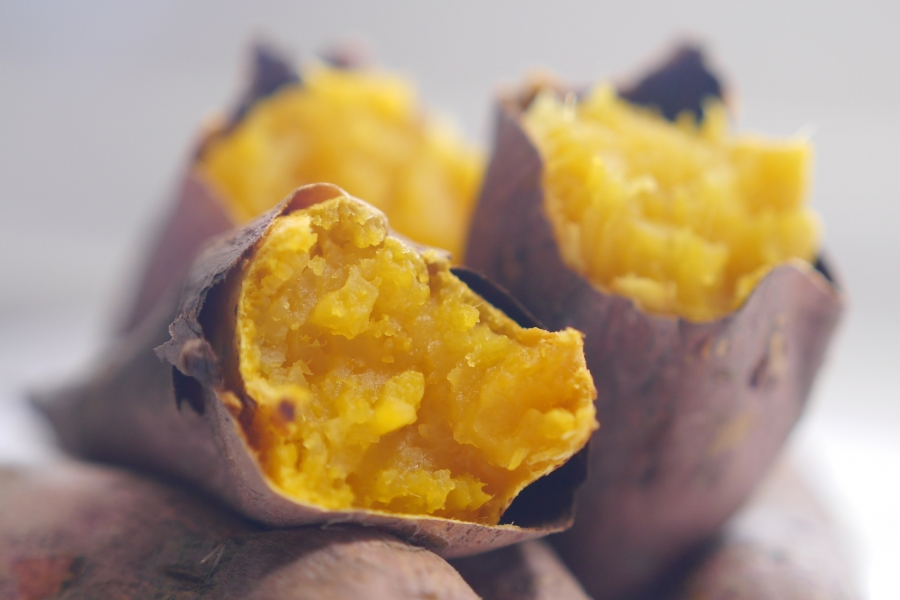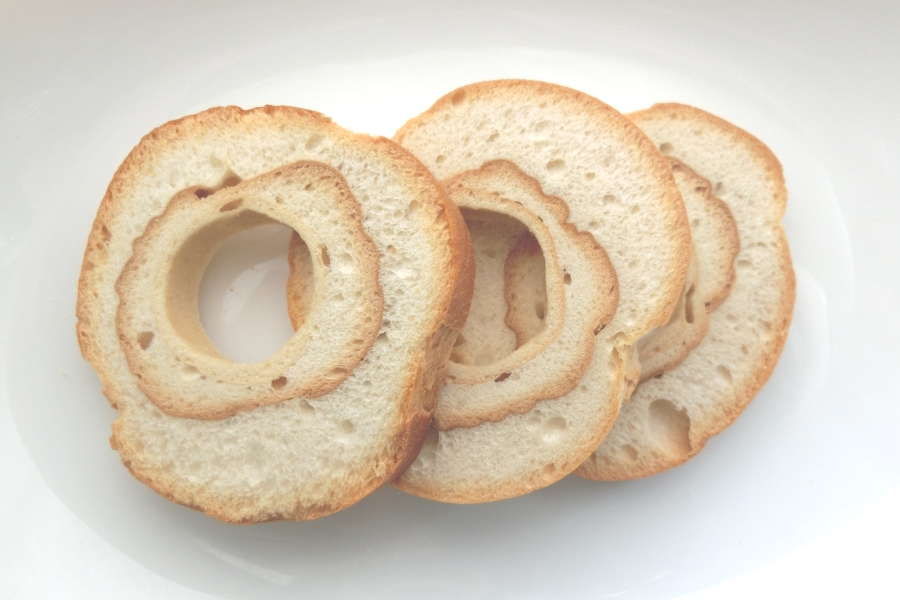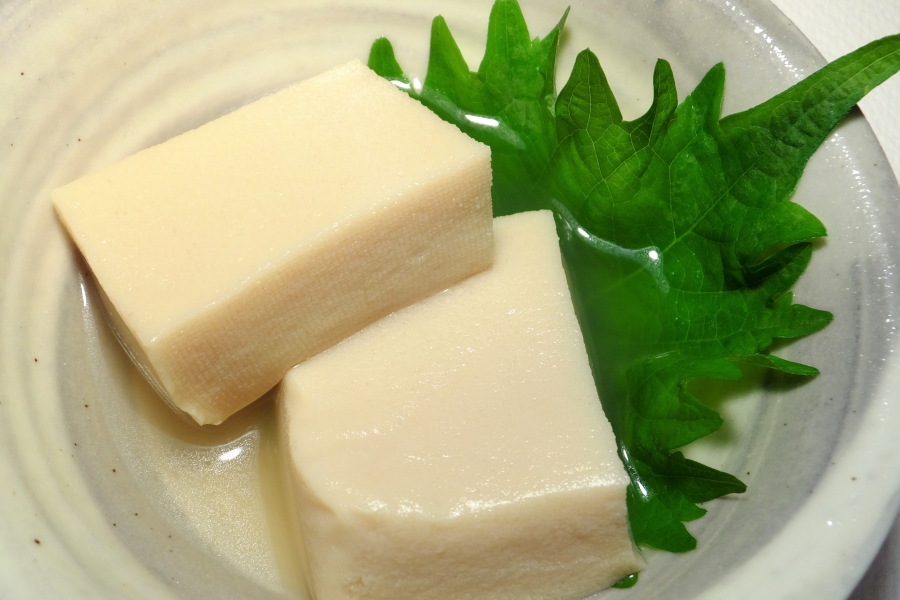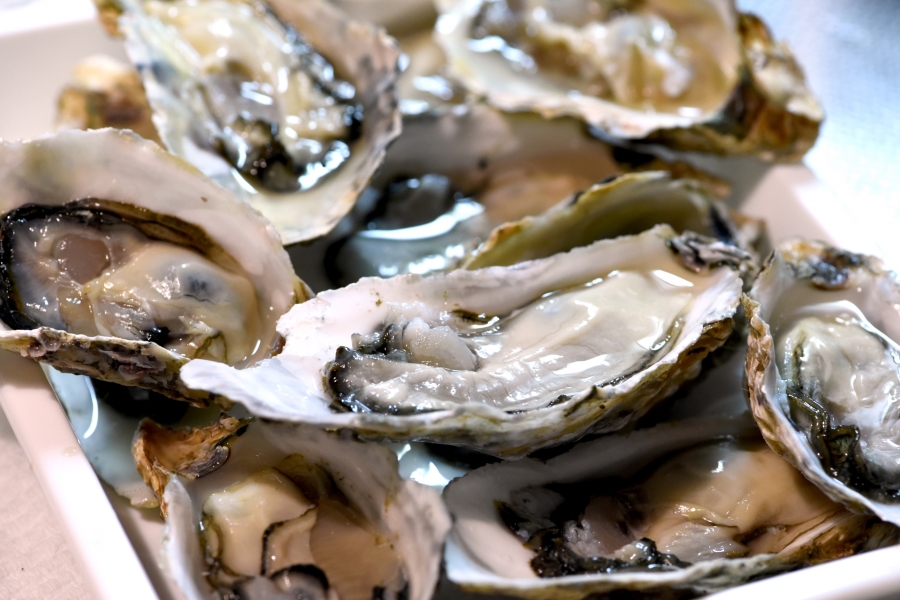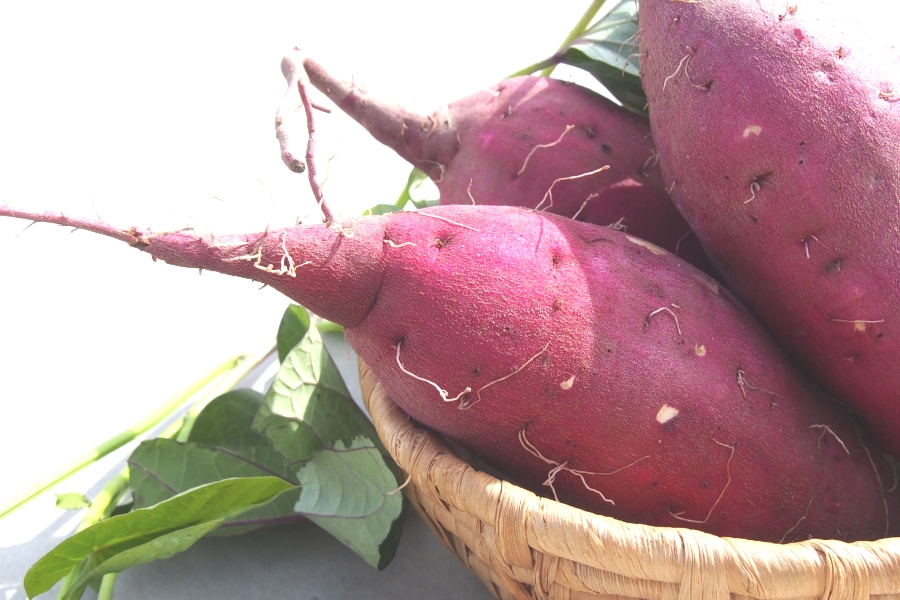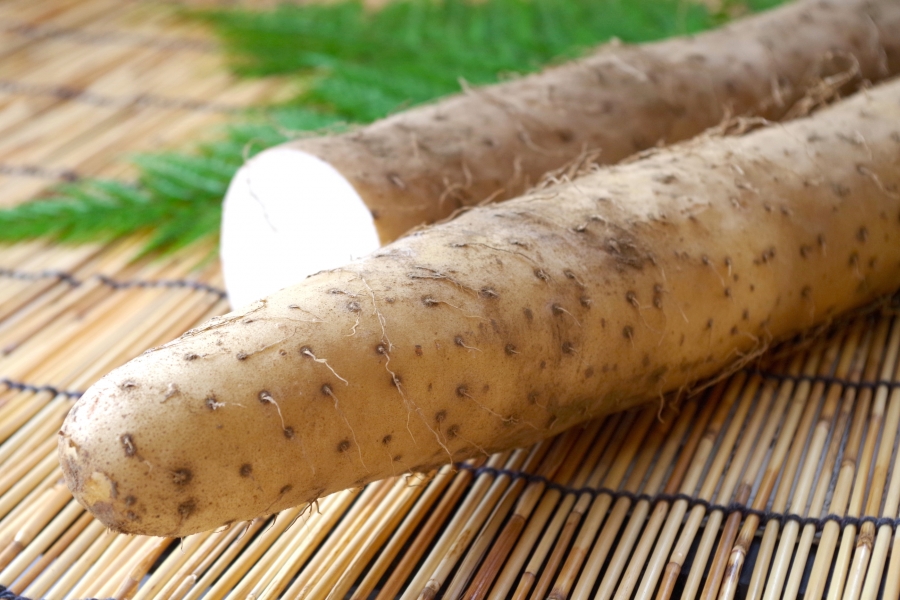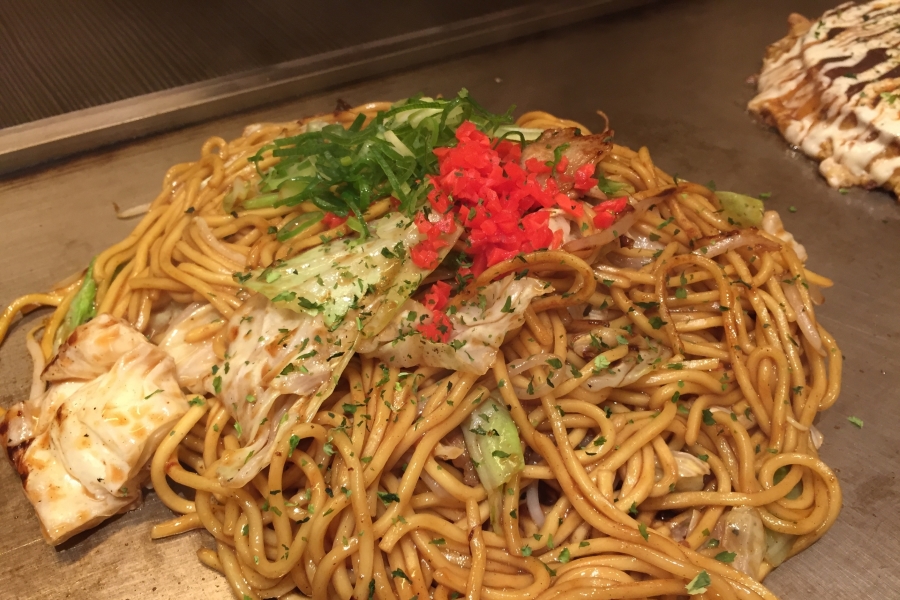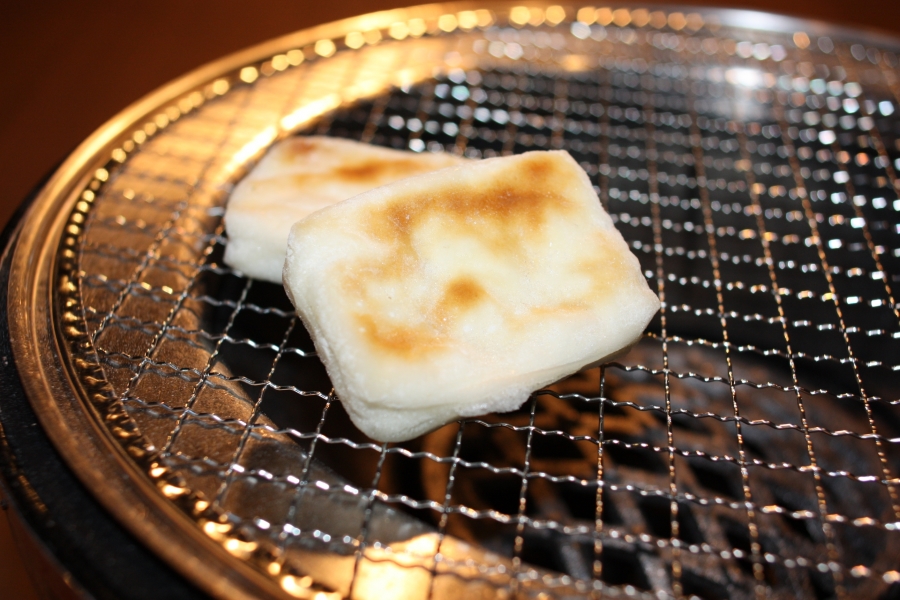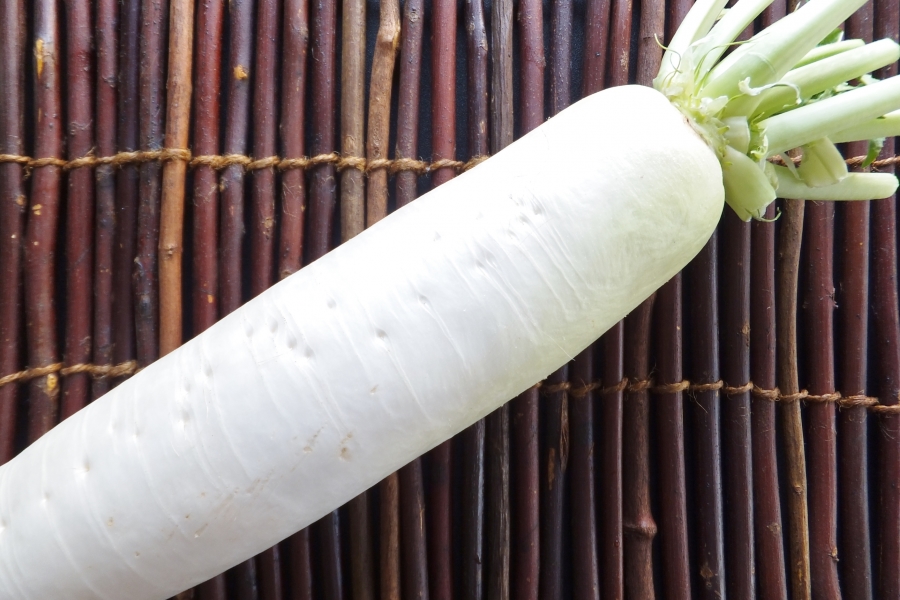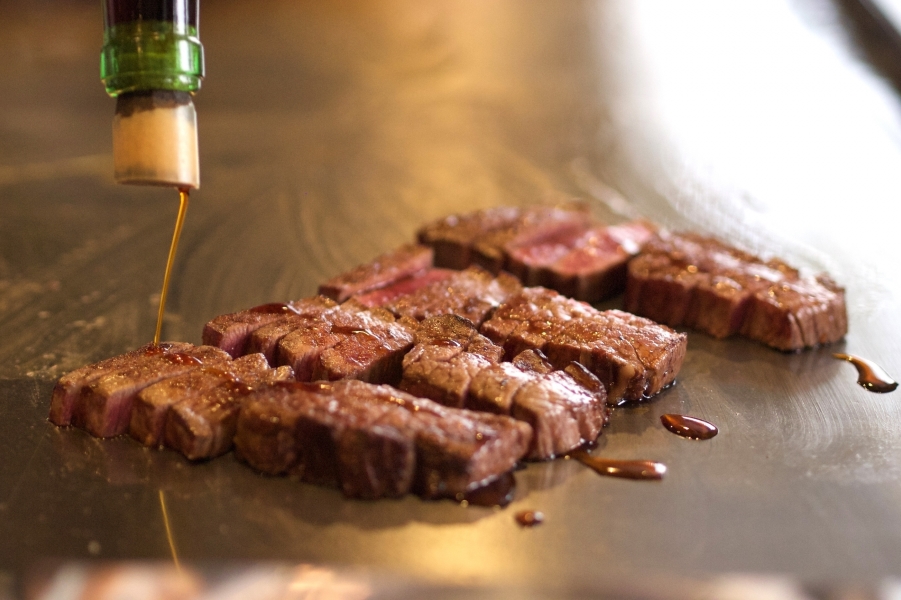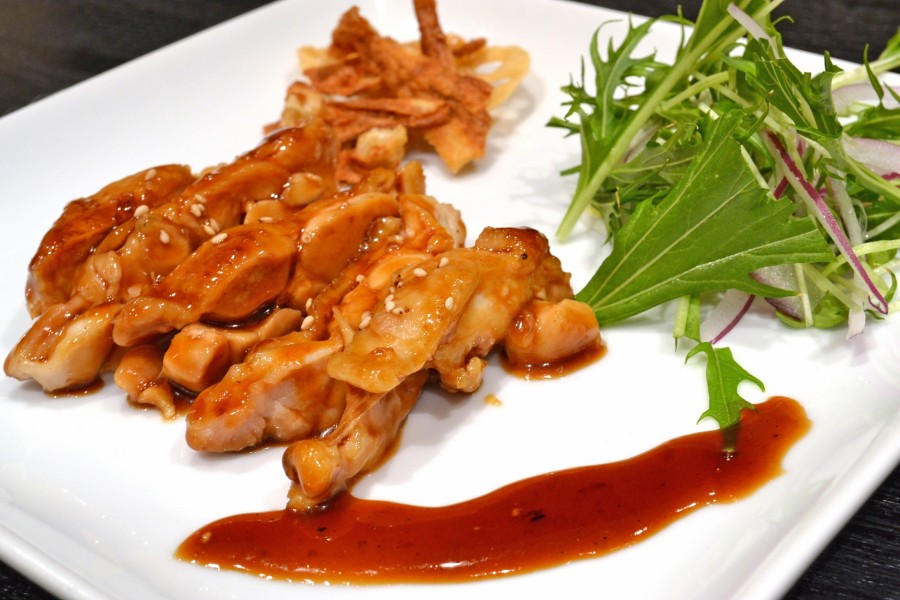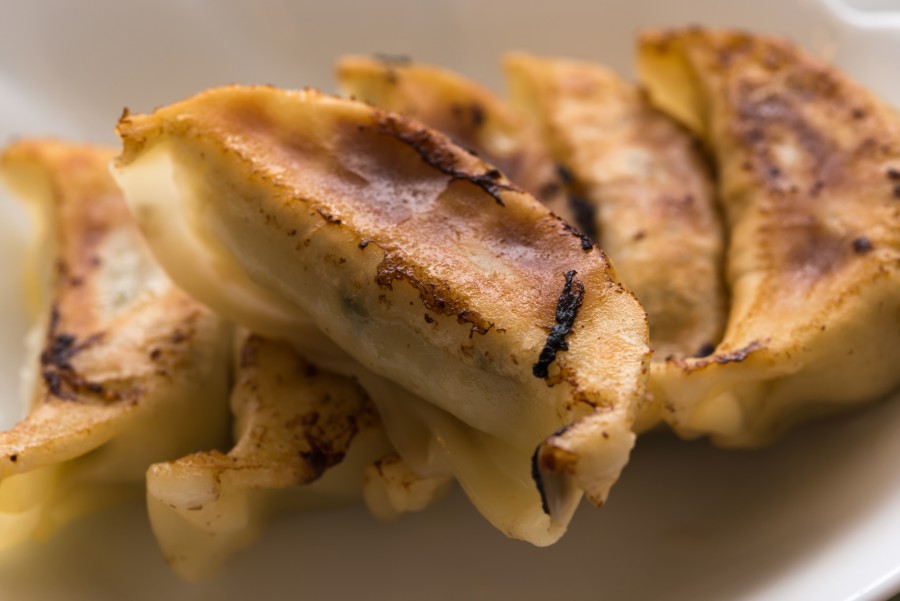Difference between Japanese Hamburger Steak and the U.S. Japanese hamburger steak is one of the most popular meals among children. Japanese hamburger steak is different from the U.S. version of the dish, because the Japanese hamburger patty is made by mixing ground meat and a variety of vegetables. This is a meal filled with mother’s love, as mothers whose children don’t like vegetables try to have their kids eat vegetables by mixing minced or grated vegetables into meat. Japanese hamburger steak is a perennial favorite for lunch, dinner, and bento. Meat Combination: A common Japanese hamburger steak is made with a combination of ground beef and ground pork. The basic ratio is 1: 1, but nowadays steak with more beef […]
Delicious Chicken Dishes From Japan Many of the classic Japanese dishes are made with chicken, such as karaage (fried chicken), yakitori (Japanese style skewered chicken), oyako don (chicken egg rice bowl), teriyaki chicken, chicken steamed rice, chicken hot pots and so on. But chicken did not become widely used in Japan until the mid 20th century. With the influence of Buddhism introduced in the 6th century, meat consumption was prohibited for a long time. It wasn’t until the late 20th century when western influence brought meat consumption back. But chicken was way more expensive than other meat and not too many people could afford it. Chicken became affordable after the World War II, when America exported broiler chickens, which are […]
Salmon is a fish that is widely consumed all over the world. Salmon are high in nutrients and have many healthy benefits such as protein, omega-3 fatty acids, and vitamin D. Here are some healthy and delicious authentic Japanese Salmon recipes that are fun and have an Asian flair. You should definitely give them a try! Best Grilled Japanese Salmon Recipes: Miso Glazed Salmon Recipe Saikyo Miso Grilled Salmon Recipe Salted Grilled Salmon with Steamed Veggie and Rice Recipe Pan Fried Salmon with Negi-Shio Sauce Recipe Miso Glazed Salmon Recipe This miso (fermented soybean paste) grilled salmon is great for barbecues or dinner parties! The sweet miso glazed salmon is hearty and delicious. Japanese main dishes go well with rice, […]
There are many different types of eggs: There are white-shelled eggs, brown-shelled ones, those with rich, golden yolks or pale-yellow yolks, etc. These differences have nothing to do with their nutritional value. The nutritional value of an egg is determined by the type of feed the hen eats. We recommend eating one or two organic or free-range eggs every day. Contents: Eggs are a healthy food source that offer excellent nutrition Nijiya’s Eggs Japanese Style Egg Recipes Eggs are a healthy food source that offer excellent nutrition Many people believe that brown eggs with deep golden-colored yolks are better in quality and thus higher priced. However, the eggshell and yolk color have nothing to do with their nutritional value. The […]
Contents: What is Breton? Why is duBreton Pork Different? The Amazing Power of Pork-kun! Nijiya’s Recipe Recommendation Japanese Style Pork Recipes What is Breton? The pork sold by Nijiya Market is from “duBreton” and nicknamed “Pork-kun.” You may have noticed this name. “Breton” is, in a way, the family name of our new line of pork. In 1944, Napoleon and Adrienne Breton, who had managed a farm in Quebec, Canada, decided to establish a business that would meet their vision and strong passion for farming. After years of hard work, Aliments Breton Foods Canada, the company they created, gained an important position in the agrifoods industry in Quebec. Thus “duBreton Pork” was born from the untiring efforts of this husband-and-wife […]
Makurazaki City, in Kagoshima Prefecture, is known as Japan’s top producer of katsuobushi (smoked, dried bonito). Our Wafu Dashi stock is made with an abundance of katsuobushi, produced in Makurazaki without the use of chemical seasonings (including MSG), artificial colors, etc. Thus it boasts more savory character (umami), flavor and mellow sweetness that come from quality fish and natural ingredients. In this article we’ll talk about this additive-free Nijiya Wafu Dashi stock. Contents: “Arakibushi” – Makurazaki Brand Katsuobushi Blending Shiitake Mushroom and Konbu Dashi Stock Granular-type Dashi Stock. That’s Easy to Use Dashi Stock Recipes Pork and Onion Stir-Fry with Ginger Recipe Dashi Simmered Nira and Enoki Mashroom Recipe Daikon with Ground Chicken Recipe Lightly Simmered Asari (clams) and Asparagus […]
Contents: The Story of Yakiimo The Birth of Yakiimo Healthy Snack How to Roast Yakiimo Health Benefit of Yakiimo Kinds of Sweet Potatoe The Story of Yakiimo We are amazed at the varieties of yakiimo that have become available in recent years, with their delightful aroma of malt sugar and as sweet and tasty as cake. Improvements in the breeding of sweet potatoes, advancements in cultivation, curing, and storage technologies, and extensive research in roasting are behind the evolutionary changes of yakiimo. The traditional types of yakiimo include potatoes roasted to the smooth, slightly dry texture favored in Kanto and those with the softer, moister texture eaten in Kansai and the south. With the availability of Naruto Kintoki, Beni Haruka, […]
Himono refers to a method of food preservation that has existed since the Jomon Period (14,000-300 BC). This method is excellent and convenient as it allows many types of fish to be preserved for consumptions all year round. Himono values the process of “drying” where the umami of the fish is extracted by exposure to the sun’s rays. Contents: The History of Himono Nutrients of Himono Himono Recipes Himono Ratatouille Recipe Himono-no-Sunomono Recipe Himono Mixed with Grated Daikon Recipe Chirashi Sushi with Himono Recipe Fried Dried Fish Recipe The History of Himono Sakana-no-himono is now widely available in the supermarket. The method of preserving fish as himono has apparently been practiced since the Jomon Period (14,000-300 BC): fossils of dried […]
Contents: Fascinating Facts About Fu History of Fu A Variety of Fu Enhance The Flavor of Your Everday Dishes! Eat Fu to Stay Healthy Fu Recipes Dashimaki Tamago (Japanese Rolled Omlete) Recipe Kuruma-fu no Nimono (Simmered Kuruma-fu Dish) Recipe Fu Chanple (Stir-fried fu) Recipe Fascinating Facts About Fu Fu is not bread, nor is it a cracker. It isn’t a snack food, nor is it a staple food. Although it is made from wheat flour, you don’t see fu in the flour-consuming nations of Europe or North America. Fu is a uniquely Japanese specialty. Just like koyadofu (freeze-dried tofu), miso (fermented soybean paste), katsuo-bushi (dried fish flakes), niboshi jako (dried tiny fish), sushi and soba (buckwheat noodles), there is nothing […]
Contents: What is Gindara? Gindara Recipes Gindara Kasuzuke Recipe Simmered Gindara Nitsuke Recipe Gindara Agedashi (deep-fried gindara) Recipe Yu-an Style Grilled Gindara Recipe Easy Foil-baked Gindara Recipe What is Gindara? Gindara is a relatively expensive fish in Japan. It is known for its soft-textured flesh with high fat content, and it’s an excellent fish for simmering or baking. The best ways to eat gindara are probably kasu-zuke and saikyo-zuke. Cooking gindara by these methods will remove the excess water from the fish and trap the fat content within the fish. Gindara becomes even more flavorful when cooked together with the flavors of sake lees or Saikyo miso. In Japan there are stores that specialize in kasuzuke, and each year trips […]
Contents: Miso Comes in a Variety of Shapes and Forms Moromi-Miso Recipe Miso Comes in a Variety of Shapes and Forms Miso is normally used in soups and/or cooked dishes. However, some types of miso are used alone as a topping for plain-tasting foods, eaten as a snack with drinks, or put on steamed rice. These types of miso are referred to as “okazu miso.” Kinzanji-miso is a wellknown example of okazu miso. Moromi-miso refers to a soft, solid mass where the raw ingredients brewed to make soy-sauce or sake become fermented. Put simply, it is a stage of fermentation prior to becoming soy sauce. To make moromi-miso, the koji (malted rice) made from wheat, soybeans, rice, etc., is fermented […]
Nobody knows who came up with koyadofu first, though it’s certainly a traditional Japanese flavor that dates back to ancient times. Koyadofu is made simply from soybeans, and has long been enjoyed throughout Japan under the names “Shimi-dofu” or “Koyasan-dofu.” It looks just like a hard sponge, and it doesn’t even appear to be edible or fresh. Koyadofu could have been destined to simply die out, but now it is appreciated for its distinctively high nutritional value. Koyadofu is an excellent, storable healthy food that Japan can boast to the world. Its nostalgic taste is now becoming increasingly popular and is soon to emerge as a dynamic influence on modern cooking. Contents: What is Koyadofu? The Nutritional Value of Koyadofu […]
Contents: Nijiya’s Nori Tsukudani Nori Tsukudani Recipe Nijiya’s Nori Tsukudani New items added to our popular “Nijiya Small Bottle” series are Nori Tsukudani and Nori Tsukudani with Shiitake. Nori tsukudani is made with simple ingredients-nori seaweed and seasonings; Nori Tsukudani with Shiitake has added shiitake mushrooms. Nori seaweed is rich in protein, vitamins, and minerals. We make it without MSG and thickener so you can feel its natural, smooth texture. Enjoy Nijiya homemade Nori Tsukudani on steamed rice and of course with onigiri (rice balls)! How to Cook Nori Tsukudani (Nori Tsukudani Recipe) Nori Tsukudani Rolled Egg Good for bento menu! Ingredients (Serves 2) 3 eggs 1 Tbsp. Nori Tsukudani Salt and pepper (to taste) Oil (as needed) Cooking Directions […]
Contents: What is Sakura Denbu? How to Cook Sakura Denbu What is Sakura Denbu? Sakura denbu refers to mashed, seasoned fish that is colored light pink with red food coloring. The pink color evokes the blossoms of Japanese cherry trees, called “sakura,” in Japanese. Sakura denbu is mainly used to add color to rice and sushi dishes. It gives off an airy mouth-feel with a lightly sweetened and gentle flavor. Denbu is often mistaken for “oboro,” but oboro uses shrimp and/or salmon. Denbu is soft and fluffy while oboro is crumbly. Either can be used to add color or as a topping for sushi, etc. Though “denbu” is rarely eaten in large quantity, it is indispensable for its role in […]
Contents: What is Kaki (Oysters)? Degree of Freshness is Different with Nijiya’s Oysters Oyster’s Nutritional Value Oyster Recipes As the weather turns cold, hot-pot dishes appear frequently on the dinner table. Family and friends enjoy gathering around a delicious hot-pot dish. There are many kinds of hot-pot dishes: sukiyaki, shabu-shabu, chanko-nabe, motsu-nabe, etc. The most popular versions of these are seafood hot-pot dishes such as crab-nabe. When salmon, codfish, monkfish, etc. are put in the pot with a variety of vegetables, the umami of the ingredients is definitely enhanced. We recommend putting oysters in seafood hot-pot dishes. A melting, soft and syrupy umami from the oysters fills the mouth. Here, we are going to talk about oysters, which are also […]
Contents: Best Yakiniku Restaurant, “Gyu-Kaku” Gyu-Kaku Menu Where is Gyu-Kaku? What is Yakiniku anyway? Best Yakiniku Restaurant, “Gyu-Kaku” Fact: Yakiniku smells insanely good. When you pass by any Gyu-Kaku restaurant in the world, the smell of grilled meat allures you. Even if you are going to a meeting and don’t have time to stop for a yakiniku lunch, you’ll be thinking about it all throughout the meeting, at night, until you have yakiniku in your stomach. Lucky for you, Gyu-Kaku restaurant is expanding and there’ll be one near you soon. What is Gyu-Kaku, you ask? If you ever had Japanese style BBQ, where you grill your own meat, chances are, you have been to Gyu-Kaku. Gyu-Kaku Japanese BBQ restaurants have […]
Matsutake is a wild seasonal mushroom having an intense aroma, distinctive texture and natural flavor. Matsutake, grows in relatively dry soil containing few nutrients. It is found in the autumn in single-tree forests of Japanese red pine, Yezo spruce (Picea jezoensis), etc., or in mixed forests of primarily needle-leaved trees. Contents: What are Matsutake Mushrooms? How to prepare Matsutake Musrooms? Let’s taste Matsutake Mushroom simply and originally! How to cook Matsutake Mushrooms? What are Matsutake Mushrooms? The relationship between the Japanese people and mushrooms has a long history. Many pieces of mushroom-shaped earthenware have been found in ruins of the Middle Jomon Period (3500-1500 B.C.E.). The Japanese classic Manyoshu poetry anthology contains tanka (thirty-one syllable poems) featuring the matsutake mushrooms […]
Kabocha can be harvested twice a year, in the spring and fall, but the latter is its peak season. Harvested kabocha can be stored for a period of over a month to enhance its sweetness. Those harvested during the peak season undoubtedly taste better. Contents: A Flavor of the Earth Would you like some delicious Kabocha? How to cook Kabocha (Japanese pumpkin recipes) A Flavor of the Earth Did you know there was once a custom in Japan based on the saying that “eating kabocha with shiruko (sweet soup made from azuki beans) on the winter solstice will prevent common colds?” Not many people would know about such a thing these days. Around the winter solstice – the time of […]
The sweet potato (satsuma-imo) is native to Mexico and the surrounding tropical American region. Diploid Ipomoea trifida, which belongs to the family Convolvulaceae, has been identified as a wild ancestor of the sweet potato. Today’s sweet potatoes are believed to have been developed through artificial selection as a result of mutation and cross breeding with wild species. Whether artificial or spontaneous, a great number of sweet potato species have been created throughout the long history of its cultivation. Different regions grow varieties befitting their geographical needs. In fact, sweet potatoes are grown in most of the tropical, subtropical and temperate zones around the glove today. For that reason the sweet potato comprises an astonishing array of varieties, with new types […]
Eggplant, a tropical plant, is said to have originated in eastern India. A long time ago the plant was brought into southeastern Asia, but there is no record to indicate exactly when that was. In Japan, eggplant is believed to have a 1,200-year history and used to be called “nasubi.” Today there are numerous eggplant varieties throughout the world. In Japan alone, there are various names or shapes of eggplants that are of local origins. For example, “Kamonasu” is the famous, smaller-sized, round eggplant originated in Kyoto. Contents: Why is fall eggplant so delicious? “Organic Eggplant” How to Cook Nasu? (Eggplant Recipes) Why is fall eggplant so delicious? Why is fall eggplant so delicious? Eggplant is generally considered to be […]
Nagaimo is a root vegetable from the family Dioscoreaceae. There are three major groups of yams generally referred to as “yamanoimo” (Dioscorea japonica): yamanoimo, jinenjo (Japanese yam), and daijo (water yam). Yamanoimo have been consumed in Japan since the olden days. Contents: About Nagaimo (Japanese Yam) Nutritional Value of Nagaimo Handling Nagaimo How to cook Nagaimo? (Japanese Yam Recipes) Tofu Salad with Avocado and Mountain Yam Recipe Nagaimo-no-buta bara maki (nagaimo wrapped with boned pork ribs) Recipe Deep-Fried Nagaimo Recipe Nagaimo Negi-yaki (green onion-grilled nagaimo) Recipe Nagaimo Juice Recipe About Nagaimo (Japanese Yam) Raw grated nagaimo has a unique sticky texture. Nagaimo transforms plain rice and noodle dishes into special treats such as mugitoro-gohan (a bowl of boiled rice and […]
Among summer vegetables, this bumpy, warty-skinned vegetable is a relative newcomer. In the past few years, however, goya’s health-enhancing properties have drawn attention throughout Japan. Because goya can be grown in home gardens during he peak summer season, it has become a popular vegetable. In fact, goya is now so popular that its seeds sell out quickly at garden centers. Contents: Goya (Bitter Melon), a Summer Vegetable A Shade-Producing Plant that Can Block Sunlight Nijiya Farm’s Organic Goya Nutrients of Goya Basic Cooking Preparation for Goya How to cook Goya? (Goya Recipes) Goya (Bitter Melon), a Summer Vegetable In Okinawa, known for the longevity of its population, goya has been a regular part of the diet for a long time. […]
When it comes to enjoying fall flavors, mushrooms are an obvious choice. Although there are many varieties of edible mushrooms, generally they can be divided into saprobic fungi and mycorrhizal fungi. Saprobic fungi include wood-rotting fungi, which grow out of the trunks of living trees. Most of the mushrooms that can be cultivated are saprobic fungi; they break down fertilizers and the trees on which they feed. Wood-rotting fungi include shiitake, maitake, nameko, enokidake, buna-shimeji, hiratake, and eringi. White mushrooms and Agaricus do not grow out of trees but are still considered saprobic fungi. Contents: Matsutake Mushrooms Kinkatsu (A healthy life with microorganisms) How to cook Kinoko? (Mushroom Recipes) Matsutake Mushrooms “Matsutake” is definitely the king of mushrooms. It is […]
Yakisoba is a stir fried noodle dish made with vegetables and a meat like chicken, beef or pork belly. In Japanese yaki means grilled and soba means buck wheat noodle, but even though yakisoba has “soba” in its name the noodles grilled in this dish are similar to those found in ramen and not the buck wheat “soba” noodles. Contents: What is Yakisoba? Different types of Yakisoba Make your own Yakisoba! How to cook Yakisoba? (Yakisoba Recipe) Best Seller Fresh Yakisoba Noodles Yakisoba Sauce: powder or sauce? No Recipe Required! Ready to Eat Instant Yakisoba Noodles What is Yakisoba? Nothing says “Japanese festival food” like Yakisoba. The smells and the sounds of yakisoba cooking on a hot steel plate are […]
What is Mochi? Mochi is a Japanese rice cake, seen generally in the form of a little, round cake which could be eaten with condiments like soy sauce, grated daikon, or seaweed. As a confection, it also could be eaten with kinako (roasted soy bean flour) or anko (azuki bean paste). Traditionally, pounding steamed glutinous rice in a large mortar makes mochi, called “usu”, with a wooden mallet called “kine”. Mochi tsuki is the Japanese term for the traditional style way of beating the steamed glutinous rice to make mochi. The tacky mounds of rice are made from mochigome, a sweet and sticky rice, distinct from the steamed rice daily eaten. Contents: Mochi History How to cook and eat Mochi? […]
Daikon (Japanese radish) is a typical winter vegetable. Even though it’s available throughout the year, winter is when daikon is at its tastiest. Besides being tasty, daikon has many therapeutic properties. So, organically grown daikon would be the better choice. Contents: What is Daikon Radish? Daikon Radish is an Outstanding Digestive Aid and Improves Blood Circulation. To Get the most out of Daikon Radish, Apply the most Suitable Cooking Method to Each Part. Don’t Waste the Skin! Leaves are Also Very Nutritious! How to Cook Daikon Radish? (Japanese Daikon Recipes) What is Daikon Radish? Organic Daikon – Let’s enjoy every part of it! The most widely known Japanese daikon radish is the Aokubi daikon. It has a less peppery flavor […]
Contents: Recommending vinegar consumption Vinegar TRIVIA (Is vinegar good for you?) How to use Japanese Vinegar? Recommending vinegar consumption During the summer months, it seems that many people complain of fatigue, using up more stamina than usual, and feeling out of sorts with no cause. This is said to be due to our bodies’ becoming acidic because of changes in modern eating habits. It is known that the body’s natural healing power is strongest when the body maintains a slightly alkaline state. In other words, those whose physical constitution is slightly alkaline are less vulnerable to fatigue, disease and/or injury because of an enhanced natural healing power. Conversely, those whose bodies are acidic have their natural healing power compromised, becoming […]
Teppanyaki literally means “grilling on the griddle,” teppan meaning “iron griddle” and yaki meaning “to grill.” Contents: Best Teppanyaki Restaurant “Benihana” Benihana’s Teppanyaki Menu Benihana Locations What is Teppanyaki? Best Teppanyaki Restaurant “Benihana” With over 70 international restaurant locations, Benihana, indeed, is the most well known and arguably the best teppanyaki restaurant in the world. Benihana’s unique entertainment-dining style established itself as a pop culture icon, such that even a person who hasn’t been to Benihana knows what it’s all about. At Benihana, a variety of meat and seafood are cooked and grilled right before the diners’ eyes by chefs who multitask between cooking and entertaining. The chef’s performance includes juggling food with spatulas and building steaming volcanoes out of […]
In Japanese, teri means “shining” and yaki means “to grill” or “to broil,” and teriyaki actually refers to the cooking technique of brushing a seasoning on the items you are grilling. Contents: What is Teriyaki Sauce? How to cook Teriyaki? (Teriyaki Chicken Recipe) Teriyaki Sauce Recipe Teriyaki Chicken Recipe Teriyaki Salmon Recipe Authentic Teriyaki Chicken Bowl Recipe Best Teriyaki Sauce Brands What is Teriyaki Sauce? Some of you might have a bottle of teriyaki sauce in the fridge or have seen teriyaki among the many choices in the sauce section of your local super market. But what exactly is teriyaki sauce, and is it just for Asian barbeque? In Japanese, teri means “shining” and yaki means “to grill” or “to […]
Contents: What is Gyoza? How to cook Gyoza? (Pork Gyoza Recipe) Frozen Gyoza: Super Easy Recipe! What is Gyoza? Crisply pan-fired skin, wrapping a hot juicy filling is the perfect dish with rice or as a snack with beer. We are talking about gyoza, or Japanese dumplings, a food popular with kids and adults alike. You may think that gyoza originated in China, but surprisingly, similar foods have existed for a long time in other countries, such as India, Nepal, and Mongolia. This is because growing wheat, which started Mesopotamia, spread throughout countries along the Silk Road. The wheat-eating cultures that reached China influenced gyoza-making. In China, gyoza usually refers to sui-gyoza (boilied dumpling), but pan-fried gyoza (pot-sticker gyoza) is […]
